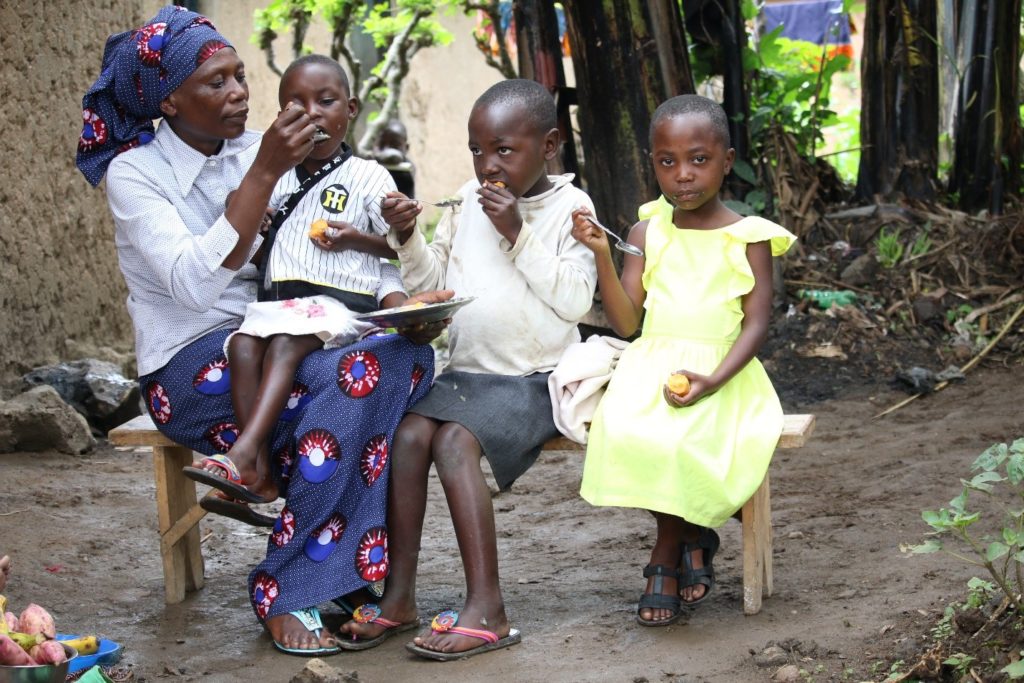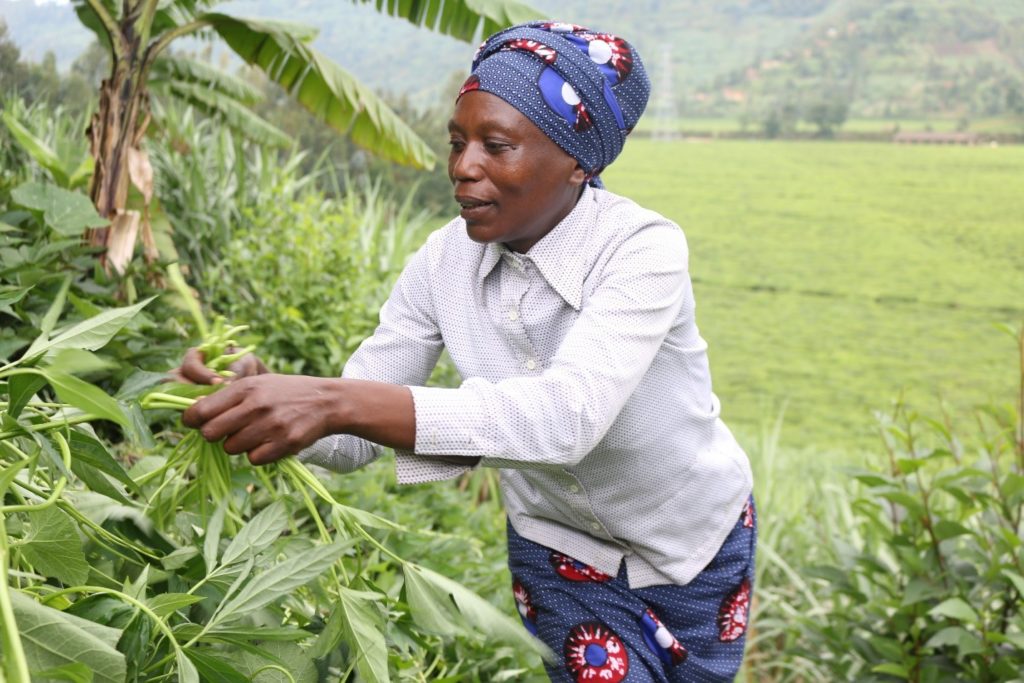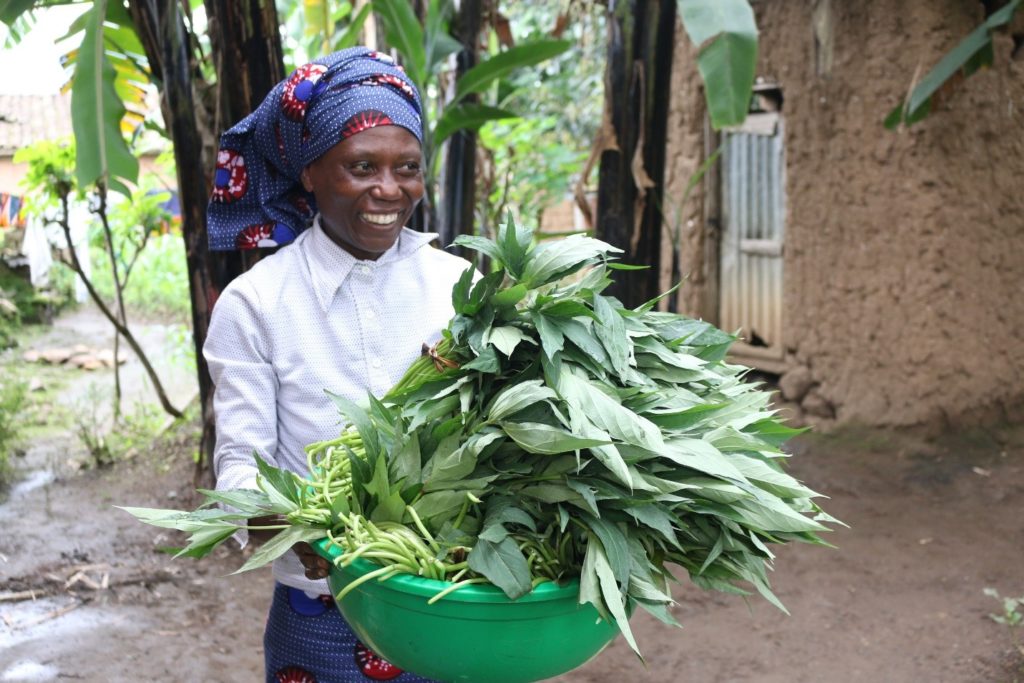Ahezanaho Epiphanie is a 42-year old mother of six and a farmer living in Terimbere village, North West of Rubavu District. Since she got married in early 1991, Ahezanaho has relied on subsistence agriculture to earn a living. However, life took a new twist in 2012 for Ahezanaho and her family after the sudden demise of her husband.
“With him, we could supplement our household’s income with the little money that he made besides farming. Life is absolutely different now, bread is hard to come by and butter is only a dream,” says Ahezanaho. Things went downhill even further when eventually, her family started suffering the effects of hunger.

Her two youngest daughters Josiane and Laetitia of five and 7 years respectively, were the first to be hit. They would get sick regularly and there was no way around it. “There wasn’t sufficient food to feed us and even the little that we got was in no way balanced. They were suffering undernutrition,” laments Ahezanaho.
The community health volunteer in her village repeatedly categorized the youngest in the red category (which indicates severe acute malnutrition and immediate treatment should be sought) while her other daughter stagnated in the yellow mark (indicating that the child is at risk of acute malnutrition and should be counselled and followed-up for growth promotion and monitoring) for more than two years.
In late 2015, Ahezanaho got a reprieve when the United States Agency for International Development (USAID), through the International Potato Center (CIP) and Imbaraga farmers’ organization, identified her household as one of the hundreds of highly vulnerable requiring interventions.

Through a project aimed at combating malnutrition and improving health standards of the Rwandese, her family was given orange-fleshed sweetpotato roots and planting materials together with a package of booklets containing information on how to best handle these new varieties.
With the help of her eldest daughter, 25-years old, she began practicing what the books she was issued with recommended.
” After reading through the books, she told me that we did not have to wait to eat the sweetpotato roots after harvest. We could also eat the sweetpotato leaves as vegetables because they are high in vitamins. We realized that the leaves taste even better than the bean leaves we normally eat in my village,” she recalls joyfully.
Following further training conducted by CIP, Ahezanaho also learnt about the additional benefits of eating the sweetpotato leaves and their orange-fleshed roots, including mixing them with other foods on a regular basis to help alleviate vitamin deficiency.
This new diet worked in her household and her ailing children recovered completely.
“Recently, the Community Health Worker (CHW) working with the project visited me and declared my children free from malnutrition and they all shifted to the green category (which means the child is well nourished),” she narrated excitedly.
Ahezanaho, like many other farmers who have been introduced to orange-fleshed sweetpotato farming, is now living her dream. She now sells OFSP green leaves in neighboring Democratic Republic of Congo. She makes an approximated sale of up to Rwf 6000, (7 dollars) per day.

“Like many women in my village, I have for a long time dreamed of selling my surplus agriculture produce in the Democratic Republic of Congo, but how could I when I couldn’t even fend for my family? After consistently eating sweetpotato leaves, an idea crossed my mind to share my discovery with a neighbor who sells vegetables in Bukavu-DRC. She encouraged me to attend the market once so that she could connect me with Congolese clients who regularly buy from her and they accepted to try my sweetpotato legumes. Since then, I am selling OFSP green leaves in Bukavu,” Ahezanaho says.
Ahezanaho crosses the Rwanda-DRC border every Monday, Wednesday and Saturday, exporting sweetpotato leaves as cooking vegetables. The vegetables have become popular in Bukavu, where they are used to make a delicious dish mixed with fish. Now, she receives so many orders that she cannot fill them.
Ahezanaho has now started buying OFSP leaves from fellow farmers in the village to meet the demand in Bukavu. She has also teamed up with the Government Community Health Worker to teach the neighbors how to prepare healthy and nutritious dishes using orange-fleshed sweetpotato.
She says that the project, funded by USAID, she has come from struggling to save her two children from malnutrition, to making sufficient income to meet her family’s needs comfortably.
Elder: 25, Uwineza Joselyne
Habimana Alain 1995
Micomyiza Placide 2001
Umwali Denise 2007
Uwera Laetitia: 2010
Uwahoze Josiane 2012.